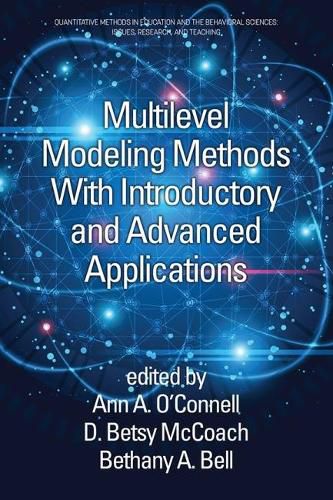Readings Newsletter
Become a Readings Member to make your shopping experience even easier.
Sign in or sign up for free!
You’re not far away from qualifying for FREE standard shipping within Australia
You’ve qualified for FREE standard shipping within Australia
The cart is loading…






This title is printed to order. This book may have been self-published. If so, we cannot guarantee the quality of the content. In the main most books will have gone through the editing process however some may not. We therefore suggest that you be aware of this before ordering this book. If in doubt check either the author or publisher’s details as we are unable to accept any returns unless they are faulty. Please contact us if you have any questions.
Multilevel Modeling Methods with Introductory and Advanced Applications provides a cogent and comprehensive introduction to the area of multilevel modeling for methodological and applied researchers as well as advanced graduate students. The book is designed to be able to serve as a textbook for a one or two semester course in multilevel modeling. The topics of the seventeen chapters range from basic to advanced, yet each chapter is designed to be able to stand alone as an instructional unit on its respective topic, with an emphasis on application and interpretation.
In addition to covering foundational topics on the use of multilevel models for organizational and longitudinal research, the book includes chapters on more advanced extensions and applications, such as cross-classified random effects models, non-linear growth models, mixed effects location scale models, logistic, ordinal, and Poisson models, and multilevel mediation. In addition, the volume includes chapters addressing some of the most important design and analytic issues including missing data, power analyses, causal inference, model fit, and measurement issues. Finally, the volume includes chapters addressing special topics such as using large-scale complex sample datasets, and reporting the results of multilevel designs.
Each chapter contains a section called Try This!, which poses a structured data problem for the reader. We have linked our book to a website (http://modeling.uconn.edu) containing data for the Try This! section, creating an opportunity for readers to learn by doing. The inclusion of the Try This! problems, data, and sample code eases the burden for instructors, who must continually search for class examples and homework problems. In addition, each chapter provides recommendations for additional methodological and applied readings.
$9.00 standard shipping within Australia
FREE standard shipping within Australia for orders over $100.00
Express & International shipping calculated at checkout
This title is printed to order. This book may have been self-published. If so, we cannot guarantee the quality of the content. In the main most books will have gone through the editing process however some may not. We therefore suggest that you be aware of this before ordering this book. If in doubt check either the author or publisher’s details as we are unable to accept any returns unless they are faulty. Please contact us if you have any questions.
Multilevel Modeling Methods with Introductory and Advanced Applications provides a cogent and comprehensive introduction to the area of multilevel modeling for methodological and applied researchers as well as advanced graduate students. The book is designed to be able to serve as a textbook for a one or two semester course in multilevel modeling. The topics of the seventeen chapters range from basic to advanced, yet each chapter is designed to be able to stand alone as an instructional unit on its respective topic, with an emphasis on application and interpretation.
In addition to covering foundational topics on the use of multilevel models for organizational and longitudinal research, the book includes chapters on more advanced extensions and applications, such as cross-classified random effects models, non-linear growth models, mixed effects location scale models, logistic, ordinal, and Poisson models, and multilevel mediation. In addition, the volume includes chapters addressing some of the most important design and analytic issues including missing data, power analyses, causal inference, model fit, and measurement issues. Finally, the volume includes chapters addressing special topics such as using large-scale complex sample datasets, and reporting the results of multilevel designs.
Each chapter contains a section called Try This!, which poses a structured data problem for the reader. We have linked our book to a website (http://modeling.uconn.edu) containing data for the Try This! section, creating an opportunity for readers to learn by doing. The inclusion of the Try This! problems, data, and sample code eases the burden for instructors, who must continually search for class examples and homework problems. In addition, each chapter provides recommendations for additional methodological and applied readings.